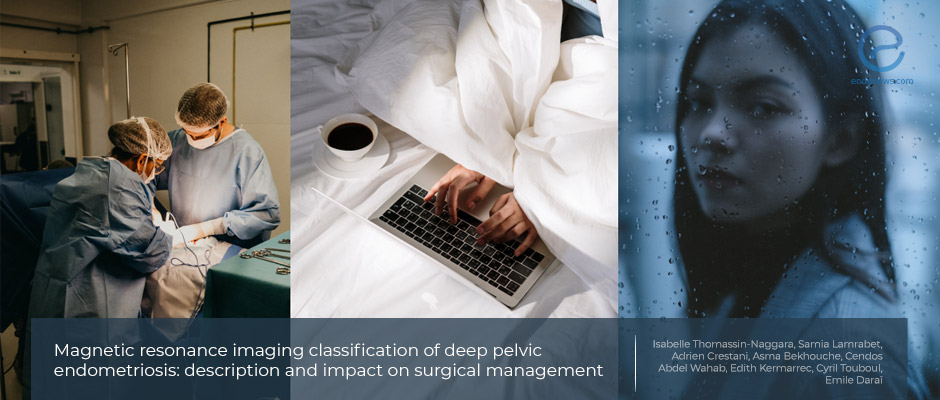Magnetic resonance imaging classification for the management of deep pelvic endometriosis
Nov 3, 2020
Magnetic resonance imaging predicts postoperative complications for women with deep endometriosis.
Key Points
Highlights:
- Operating time, hospital stay, and complications after surgery can be predicted by magnetic resonance imaging (MRI).
Importance:
- The clinician will be able to preoperatively inform the endometriosis patient about the risks of surgery based on MRI findings.
What's done here:
- Researchers carried out a retrospective observational study by MRI in 150 women with deep endometriosis who subsequently underwent surgery.
- The disease was categorized first according to the MRI-based Enzian classification [A (rectovaginal septum and vagina), B (uterosacral), and C (rectosigmoid)] and then according to a new radiological classification called the deep pelvic endometriosis index (dPEI).
- Researchers correlated MRI findings and classification with clinical, surgical and pathological results.
Key Results:
- An excellent inter-reader agreement for A and C compartments but poor agreement for the B compartment was found.
- Inter-observer agreement between the senior and junior readers was moderate for the uterosacral ligament.
- A good correlation is detected between the rate of postoperative voiding dysfunction and parametrial involvement by endometriosis.
- MRI-based and surgical Enzian classifications were compatible with A lesions in 78.7%, for B lesions in 34.7%, and C lesions in 82.7%.
- Vaginal or rectosigmoid involvement for endometriosis was associated with a higher risk of high-grade complications than patients without vaginal or rectosigmoid disease.
- A correlation was seen between postoperative voiding dysfunction and A lesions, moderate or severe deep endometriosis, the presence of at least unilateral lateral pelvic involvement, and C lesions.
Limitations:
- There is a recruitment bias due to the monocentric nature of the study.
- The number of patients with lateral pelvic endometriosis beyond the parietal fascia is limited.
- Long-term follow-up was not performed.
Lay Summary
A new study published in the journal "Human Reproduction" reported that operating time, hospital stay, and postoperative complications in patients who underwent surgery for deep endometriosis can be predicted by the MRI. This result may be useful for clinicians to preoperatively inform a patient about the risks of surgery.
A team of researchers, from Paris, France, analyzed data from 150 women with deep endometriosis on MRI and who subsequently underwent surgery between 01 January 2017 and 31 December 2018.
Researchers first categorized the disease according to the MRI-based Enzian classification [A (rectovaginal septum and vagina), B (uterosacral), and C (rectosigmoid) located lesions]. Then they used a new radiological classification, the deep pelvic endometriosis index (dPEI) which was previously described by Chiantera et al. It grades the severity of deep endometriosis as mild, moderate, or severe. The team, led by Thomassin-Naggara, correlated MRI findings, and classification with clinical, surgical and pathological results.
Inter-reader agreement for A and C compartments was found to be good but an agreement for the B compartment was found to be poor. For the uterosacral ligament, the inter-observer agreement between the senior and junior readers was moderate. The rate of postoperative voiding dysfunction and parametrial involvement by endometriosis was found to be highly correlated. MRI-based and surgical Enzian classifications were compatible with A lesions in 78.7%, for B lesions in 34.7%, and C lesions in 82.7%. Vaginal or rectosigmoid involvement for endometriosis was associated with a higher risk of high-grade complications according to Clavien–Dindo classification than patients without the vaginal or rectosigmoid disease. A correlation was seen between postoperative voiding dysfunction and A lesions, moderate or severe deep endometriosis, the presence of at least unilateral lateral pelvic involvement, and C lesions.
The authors underlined the need for larger clinical studies to validate the results of the study.
Research Source: https://pubmed.ncbi.nlm.nih.gov/32619220/
endometriosis MRI surgical complications female tract classification deep endometriosis lateral pelvic complication hospital stay

